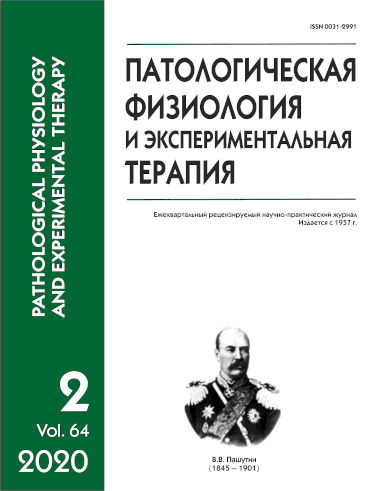A heparinoid from peony roots (Paeonia anomala): effects on polymerization and dissolution of fibrin in thrombosis
Abstract
Studying heparins and heparinoids as antithrombotic agents is relevant for physiology and medicine. Many plants contain heparin-like components (heparinoids) that prevent thrombosis. The aim of the study was to identify effects of a heparinoid obtained from peony (Maryin root, P. anomala) roots on polymerization of fibrin and fibrinolytic activity of blood plasma and to suggest possible mechanisms of these effects in experimentally induced ex vivo thrombosis in rats. Methods. The effect of peony (Paeonia anomala) root heparinoid on fibrin dissolution was studied in the ex vivo conditions of thrombosis. For ex vivo modeling of thrombosis (MT), 2 NIH units of thrombin (0.05 ml) were added to 0.2 ml of rat plasma. A fibrin clot formed within 2-3 minutes. The peony heparinoid extract (0.5%, 0.1 ml) was added either to the pre-formed clot at 12 min after MT induction (experiment A) or simultaneously with the addition of thrombin to plasma (experiment B). Jugular vein blood from Wistar male rats was used. Fibrin polymerization was detected using a plasma fibrin-depolymerization activity (FDPA) test on non-stabilized fibrin. Thrombin activity (thrombin time test), coagulation factor XIIIa activity, and FDPA were evaluated in products of fibrin dissolution induced by the heparinoid. Results. In experiment A, at 10 min after the addition of heparinoid to the pre-formed clot, a liquid phase emerged, which indicated an ability of the pion heparinoid to dissolve fibrin. In experiment B, the clot either did not form or was liquid. These results indicated inhibition of fibrin polymerization under the action of the heparinoid. Therefore, the peony heparinoid added to the fibrin clot antagonized thrombin and fibrin stabilization. The article addresses possible mechanisms of the heparinoid inhibition of fibrin polymerization. Conclusion. The studied plant heparinoid prevented processes of fibrin polymerization or dissolved formed fibrin clots due to depression of thrombin activity and fibrin stabilization.






